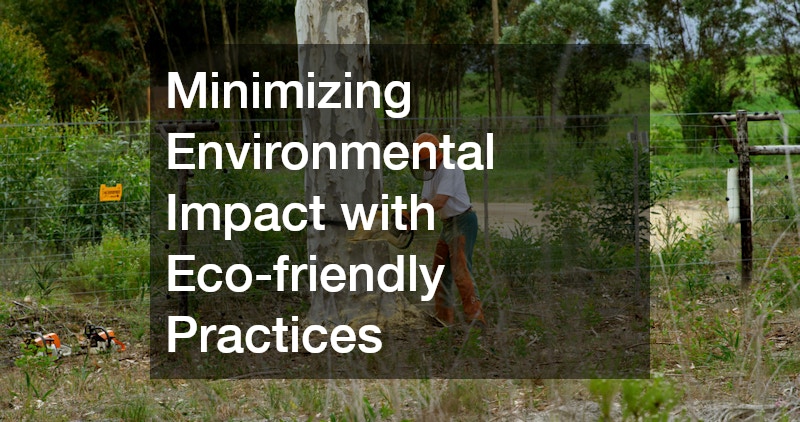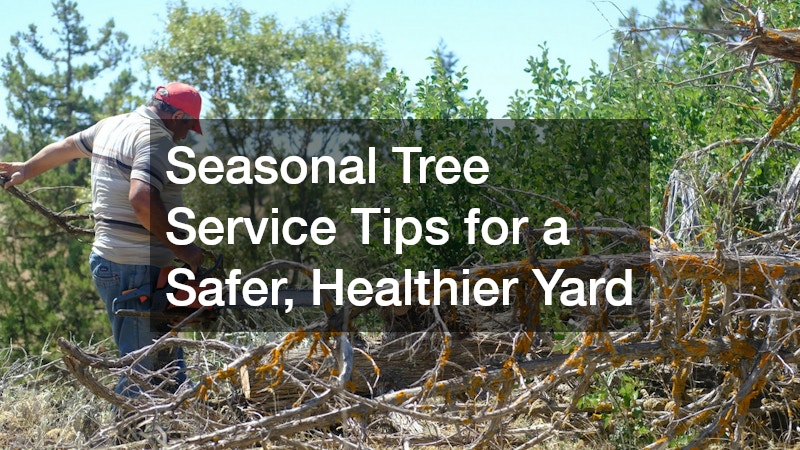Maintaining a yard’s health and safety is not just about aesthetics; it’s essential for the well-being of the entire ecosystem within your property. Seasonal tree services are crucial for ensuring that your trees remain healthy and pose no threat to surrounding structures or people. This article will guide you through various techniques and timings to maximize the benefits of tree services.
How Tree Pruning Can Improve Yard Safety
The Role of Regular Pruning in Preventing Hazards
Regular pruning plays a pivotal role in maintaining safety by preventing tree branches from interfering with power lines, windows, and structures. Overgrown branches can become hazardous in storms, potentially leading to property damage or power outages. In addition, pruning helps maintain a tree’s structural integrity, reducing the likelihood of branches breaking and causing injury.
Professionals recommend inspecting trees twice a year to identify branches that need trimming. Early detection of potential issues allows for timely pruning, which can prevent more severe damage later on. By prioritizing regular pruning, homeowners can mitigate risks and ensure their yard remains a safe environment for everyone.
Pruning not only contributes to safety but also promotes the overall health of the trees, allowing them to flourish without competing branches. This process can also elevate a tree’s aesthetic appeal by shaping it into a more uniform structure. Regular maintenance through pruning is a proactive approach to preventing potential hazards and maintaining a yard’s health.
Timing Your Pruning for Maximum Effect
The season in which you choose to prune your trees significantly impacts their growth and safety. Late winter or early spring is generally the best time for pruning most trees, as this is when they are dormant, minimizing stress and promoting vigorous growth. However, flowering trees can benefit from post-bloom pruning to avoid disrupting their natural development cycles.
By targeting the dormant season, you can reduce the likelihood of tree diseases and pest infestations. The absence of leaves during this time allows for better visibility of the tree’s structure, making it easier to identify and remove weak branches. Furthermore, trees pruned during their dormant phase will experience optimal healing once the active growing season begins.
It is important to consider specific tree species when determining the best time for pruning. Evergreen trees, for example, can tolerate pruning at almost any time of the year, while fruit trees often require more precise timing to ensure a healthy yield. Understanding these variations can help you tailor your approach to different trees within your yard, enhancing overall yard safety and tree health.
Indicators That a Tree Needs Removal
Recognizing Signs of Tree Disease and Decay
Early detection of disease and decay in trees is vital to prevent extensive damage to your yard and surrounding areas. Indicators such as dead branches, discolored leaves, and fungal growth at the base are warning signs that a tree may need to be removed. If left unattended, decaying trees can become a liability, posing risks to both people and property.
Fungal infections often spread quickly, compromising the structural integrity of a tree. It’s essential to act promptly upon noticing any abnormalities, as they can accelerate a tree’s decline. Timely removal of diseased trees can prevent the spread of pathogens to neighboring healthy ones, preserving the overall health of the yard.
Sizing Up and Evaluating Tree Stability
Assessing the stability of trees is crucial for making informed decisions about their removal. Trees with visible lean, cracked trunks, or exposed roots may be unstable and require removal to prevent accidents or collateral damage. Evaluating a tree’s size and health informs the risk it poses during severe weather events like high winds and heavy rains.
Advanced methods, such as a resistograph analysis, can determine the internal stability of a tree, revealing issues not visible to the naked eye. Trees that exhibit significant structural weaknesses are prime candidates for removal to protect the immediate environment. By prioritizing safety and acting on expert assessments, homeowners can avert potential dangers before they manifest.
How Seasonal Tree Services Impact Eco-Health
Encouraging Biodiversity with Strategic Planting
Strategic planting decisions, aligned with seasonal changes, can significantly boost biodiversity in your yard. By selecting tree species with varying blooming periods and growth habits, you can create a yard that supports diverse wildlife. Seasonal tree services encourage a balanced ecosystem, attracting beneficial insects, birds, and other wildlife.
When trees are aligned with their ideal growth conditions, they can offer habitat to different species throughout the year. This biodiversity creates a naturally resilient environment, promoting both ecological health and aesthetic appeal. Engaging in thoughtful planting practices can turn your yard into a vibrant habitat teeming with life.
Minimizing Environmental Impact with Eco-friendly Practices
Adopting eco-friendly tree service practices is integral to promoting yard health and reducing environmental impact. Techniques such as mulching, composting, and organic pest control minimize chemical use and promote a sustainable ecosystem. These practices contribute to healthier trees, improved soil conditions, and a reduced carbon footprint.
Sensible irrigation practices also play a pivotal role in conserving water and maintaining the health of your trees. Drip irrigation systems, for example, deliver water directly to a tree’s roots, reducing waste and promoting efficient water use. Implementing these methods aligns arboricultural practices with broader environmental conservation goals.
Adopting seasonal tree services is paramount for cultivating a safe, healthy yard that thrives year-round. By leveraging regular pruning schedules, identifying disease indicators, and embracing eco-friendly practices, homeowners can protect their landscape’s integrity. Seasonal tree care is an ongoing commitment that benefits not only individual yards but also contributes to wider ecological health, ultimately benefiting the environment as a whole.


